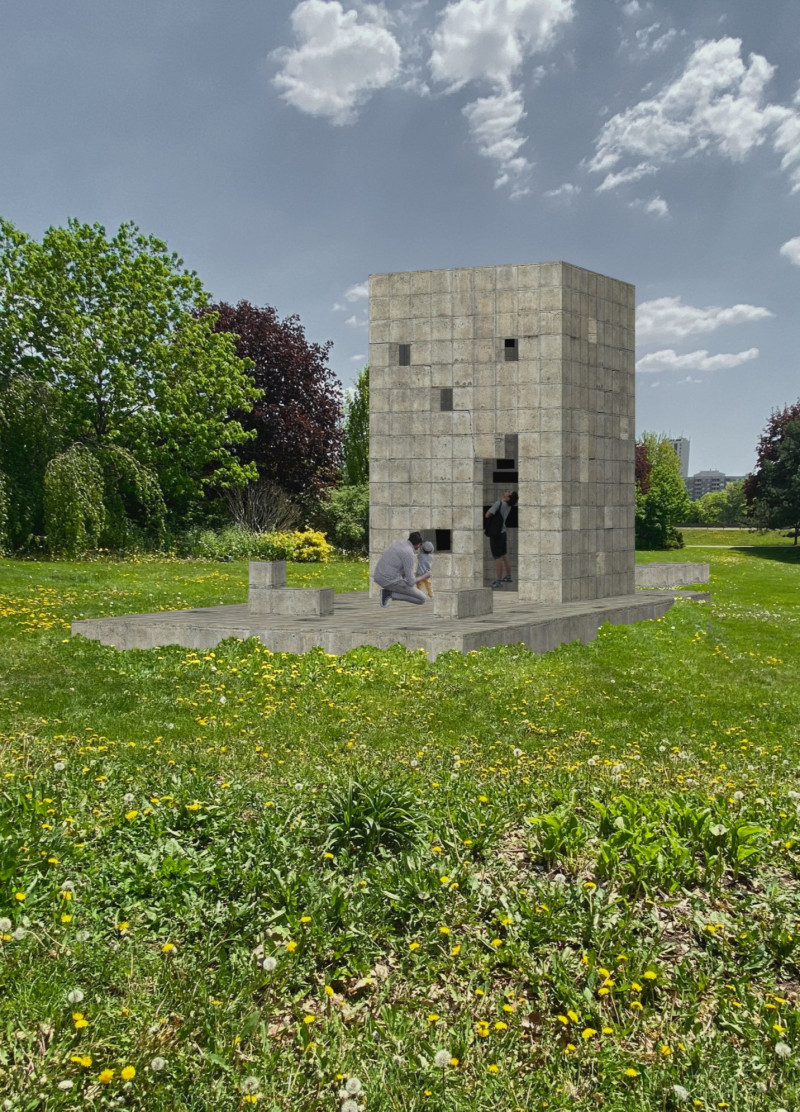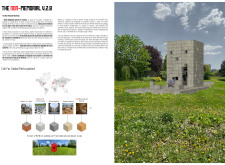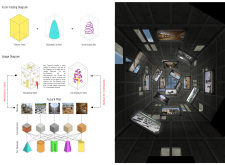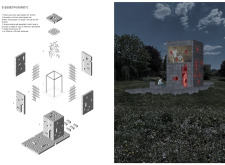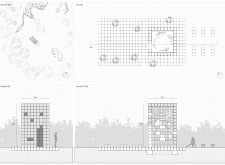5 key facts about this project
Design elements include a cubic form constructed from concrete, featuring multiple openings that facilitate connection with the environment and allow visitors to partake in the narrative experience. Internally, the architecture incorporates a spiral display rail, where various formats of storytelling, including visual and auditory elements, can be presented. This encourages visitors to engage dynamically with the architectural space.
The project emphasizes adaptability and participation. Its design allows configuration for community gatherings, making it a living monument rather than a static installation. This approach recognizes the fluidity of memory and highlights the importance of personal connection.
Interactivity in Design
Unlike traditional memorials, "The Non-Memorial V.2.8" incorporates innovative elements that promote user interactions. The storytelling holes are strategically positioned to invite participation from visitors, enabling them to contribute their experiences and narratives. By integrating technology and physical spaces, the project becomes a platform for sustained memory communication rather than a solitary tribute. The design encourages exchanges between individuals and the structure, reinforcing a communal sense of remembrance.
Material Selection and Sustainability
The material palette of the project—concrete, steel, glass, and wood—has been chosen for both aesthetic and functional reasons. Concrete forms the primary structure, providing durability and a sense of permanence. Steel elements offer essential support, while glass enhances visual connectivity and light penetration in the space. Wood is introduced in seating and fixtures, offering warmth and inviting visitors to linger. These materials work together, presenting a cohesive architectural language that addresses the project's intent and functions.
The project serves as a model for how architecture can evolve past conventional memorial forms. By embracing community participation and fostering dialogue around memory, "The Non-Memorial V.2.8" invites further exploration. For those interested in the architectural aspects of the project, reviewing architectural plans, sections, and designs will provide deeper insights into how these ideas come together in the final implementation.


